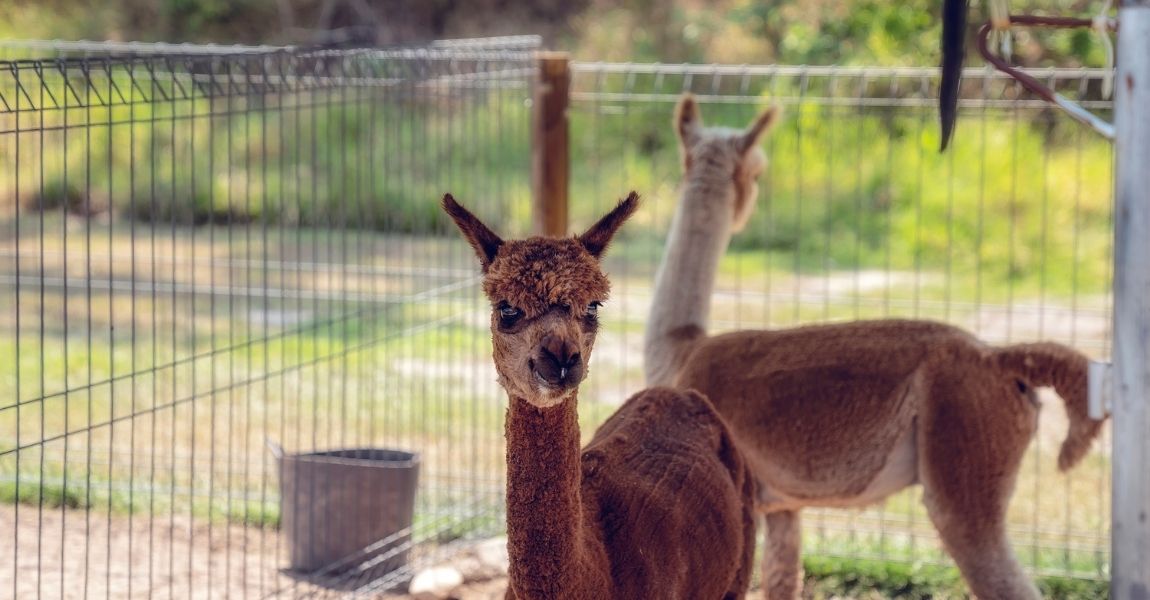Introduction:
]
Alpacas are charming and gentle camelid species known for their luxurious fiber and endearing personalities. Whether you're considering owning alpacas or simply fascinated by these graceful animals, being able to discern between male and female alpacas is an important skill. In this article, we will guide you through the key physical and behavioral traits that can help you determine the gender of an alpaca.
Size and Body Structure:
One of the primary indicators of gender in alpacas is their size and overall body structure. Adult male alpacas, known as "studs" or "machos," tend to be larger and more muscular than females. They have broader chests, thicker necks, and a more robust appearance. Female alpacas, called "hembra," are generally smaller and have a more refined and slender build.
Head Shape:
Observing the shape of the alpaca's head can provide some clues about their gender. Male alpacas typically have a more prominent and broader head shape, especially in the region between the eyes and the base of the ears. In contrast, female alpacas tend to have a more delicate and narrower head structure.
Presence of Incisor Fighting Teeth:
Male alpacas have a unique set of teeth called "fighting teeth" or "fighting canines." These incisor teeth are located in the front of their mouths, on the upper and lower jaw. These teeth are typically absent or significantly smaller in female alpacas.
Genitalia:
Examining the genitalia is a direct and reliable method of determining alpaca gender. Males have a more noticeable and easily identifiable reproductive organ called the "penis sheath." It is a tubular structure located near the ventral region of the alpaca's abdomen. Females, on the other hand, have a genital opening called the "vulva." However, it's important to exercise caution and respect when inspecting genitalia, as alpacas may find it uncomfortable or invasive.
Behavior and Social Hierarchy:
Male and female alpacas also display distinct behaviors and social hierarchies within a herd. Male alpacas often exhibit dominance behaviors such as neck wrestling, spitting, and chasing other males to establish their position in the hierarchy. Female alpacas generally exhibit more cooperative behavior, especially when it comes to nurturing and protecting their young, known as "crias."
Breeding Behavior:
During the breeding season, male alpacas may engage in a behavior known as "orgling." This distinctive vocalization is a throaty, rhythmic sound produced by males to attract females for mating. Females, on the other hand, may exhibit receptive behavior by assuming a "cush" position, where they lower their body to allow the male to mount them.
Professional Assistance:
If you are unsure about determining the gender of an alpaca or need more accurate confirmation, it is recommended to consult an experienced alpaca breeder or veterinarian. These professionals can provide a more definitive assessment using specialized techniques or ultrasound examinations.
Conclusion:
Distinguishing between male and female alpacas involves a combination of physical observation and understanding their behavioral characteristics. By considering the size, body structure, head shape, presence of fighting teeth, genitalia, behavior, and social interactions, you can make an educated assessment of an alpaca's gender. Remember, when interacting with alpacas, it is essential to approach them calmly and respectfully. Enjoy the unique journey of understanding these captivating animals and their captivating gender differences.





